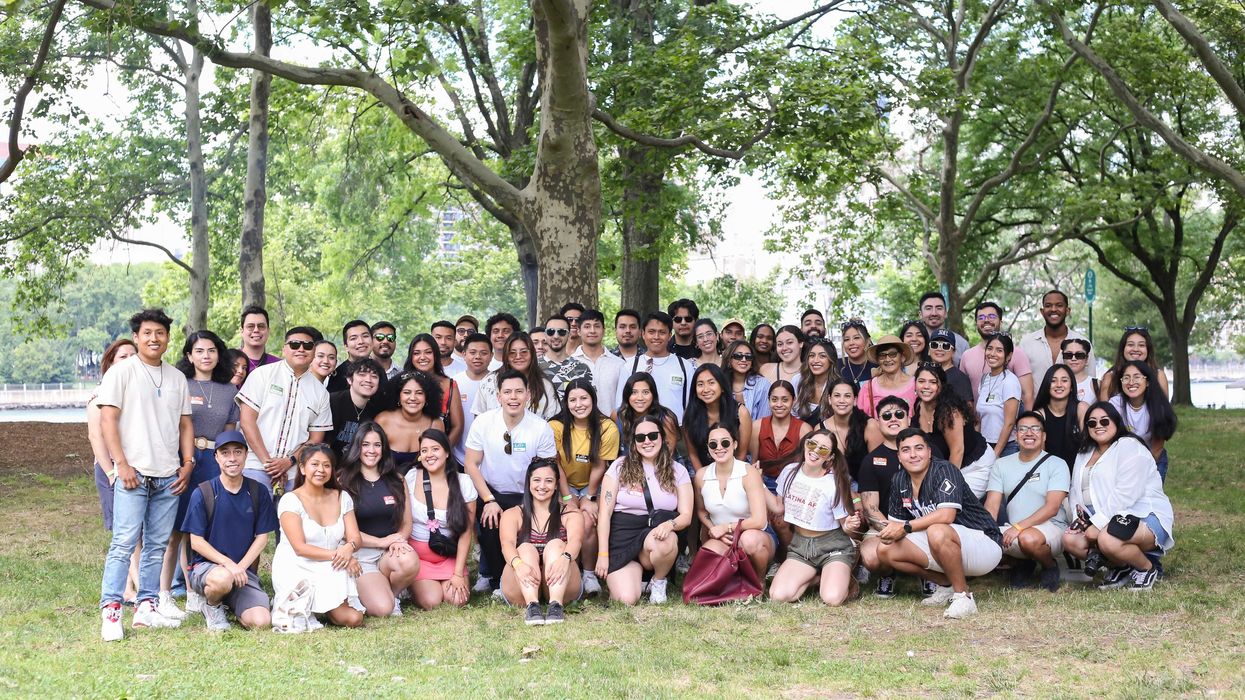This Arbor Day, as drought and wildfire fears spread from Southern California to South Carolina, the tree you plant carries hidden importance. While many Americans view trees as sources of shade, beauty, or a habitat for birds, they're actually essential to something even more precious: our drinking water. With experts warning of "aridification" across the West, water fights across the South, and just 2.5% of Earth's water being freshwater, the link between forests and water security has never been more vital.
This link between forests and water wasn't always overlooked. In fact, it was the primary reason the U.S. Forest Service was established. Gifford Pinchot, who was the first leader of the agency in 1905, recognized the foundational legislation, explicitly citing "securing favorable conditions of water flows" as its central purpose. Though now remembered largely as a champion of sustainable forestry, Pinchot's greater vision recognized that America's expanding nation required healthy forests to safeguard its water supplies for growing communities and agriculture.
This water-focused mission wasn't accidental. It reflected an understanding that healthy forests serve as nature's most efficient water infrastructure—capturing snowmelt and rainfall, filtering contaminants, regulating seasonal flows, and delivering clean water downstream to communities, farms, and industries. And there had been vivid proof that early forest management in the Northeast had devastated the water supplies for many towns and communities across the region. The U.S. Forest Service was founded to both protect watersheds and ensure they were not indiscriminately clear-cut.
This vital connection between forests and water security is something most Americans overlook. Few consider that about half of our drinking water originates in forests that filter, regulate, and store the water we depend on every day. Even more concerning, over 60% of our nation's forests are on private lands, with nearly a third of these watersheds facing high risks from development, unsustainable management, or climate impacts.
Today, this forest-water connection faces unprecedented threats. Climate change is altering precipitation patterns and increasing drought severity nationwide. Forest fragmentation from development cuts natural water systems into disconnected pieces. Catastrophic wildfires, often in watersheds that haven't been properly managed, damage water quality for decades afterward.
The stakes couldn't be higher. For example, recent research shows climate change could shrink California's water supply by up to 23% in just two decades—a warning that resonates across the country as water security becomes an increasingly urgent priority.
Fortunately, proven solutions exist and they're finding support across the political spectrum.
Look no further than last week's bipartisan legislation, introduced by Democrat John Garamendi and Republican Ken Calvert from California, that would help permanently conserve privately owned working forestlands. This cross-party effort would give states the flexibility to partner with nonprofit land trusts on forest conservation easements, extending limited conservation dollars further while respecting private ownership.
Conservation easements on private forests have emerged as powerful tools for watershed protection that transcend partisan divides. These permanent legal agreements respect property rights while achieving conservation goals—a balance that appeals to landowners and environmentalists alike. By maintaining forests' water-filtering capabilities while allowing sustainable management and economic returns, they keep forests in private hands and on local tax rolls while securing their public benefits forever.
We're seeing these solutions work in both red and blue states. Arkansas has implemented forest conservation programs protecting the headwaters flowing into the Mississippi Delta. Utah pioneered public-private partnerships for financing forest restoration in watersheds critical to Salt Lake City's water supply. New York's protection program for the Catskills demonstrates how investing in forest watersheds can save billions in built infrastructure costs.
The recent protection of California's Trinity River Headwaters offers another inspiring model. This innovative project safeguards 11,000 acres of critical watershed—an area one-third the size of San Francisco—that supplies water to millions of acres of farmland and cities as far south as San Diego. Beyond securing water supplies, the project delivers multiple benefits: climate resilience, carbon storage, wildfire risk reduction, habitat for over 230 species, and economic opportunities for rural communities.
The wildfire connection is particularly urgent. Unsustainable forest management has left many watersheds vulnerable to catastrophic fires, which subsequently lead to flash flooding and mudslides during heavy rainfall events. When forests burn severely, their soil can become water-repellent, unable to absorb the precipitation that once filtered through them. Working forest conservation easements demonstrate how watershed conservation can simultaneously reduce wildfire risk and enhance water retention—one of the least expensive climate adaptation strategies, compared to engineering solutions like dams and underground storage systems.
What makes these approaches particularly valuable is their cost-effectiveness. Dollar for dollar, protecting and restoring forest watersheds delivers more water security benefits than many engineered alternatives. Yet, our policies and funding systems still overwhelmingly favor gray infrastructure over these natural solutions.
It's time for policies that recognize forests' true value to our water security. Federal agencies should align management investments to benefit water, climate, wildlife, and sustaining rural economies simultaneously. States should finance natural water infrastructure by using the same tools—bonds, revolving funds, and public-private partnerships—employed for built systems. California, facing both wildfires and flooding, has a particular opportunity to lead by investing in watershed restoration that regulates water flow.
Most importantly, we must reimagine infrastructure. Forests securing our water supplies aren't merely amenities—they're essential systems deserving equal investment priority as dams, treatment plants, and pipelines.
As we face another summer of water restrictions, intensifying aridification, and fires, this season calls us to look beyond symbolic tree planting and toward protecting existing forests. While planting matters, restoring watersheds that provide water security to millions matters more.
This Arbor Day, let's reconnect with Pinchot's century-old wisdom: in a world where only 2.5% of water is freshwater and increasingly precious, protecting and restoring forest watersheds is our most crucial investment that communities will depend on for generations.
Laurie Wayburn is the co-founder and president of Pacific Forest Trust.

























 Source: Corporate Pero Latinos
Source: Corporate Pero Latinos Source: Corporate Pero Latinos
Source: Corporate Pero Latinos Source: Corporate Pero Latinos
Source: Corporate Pero Latinos